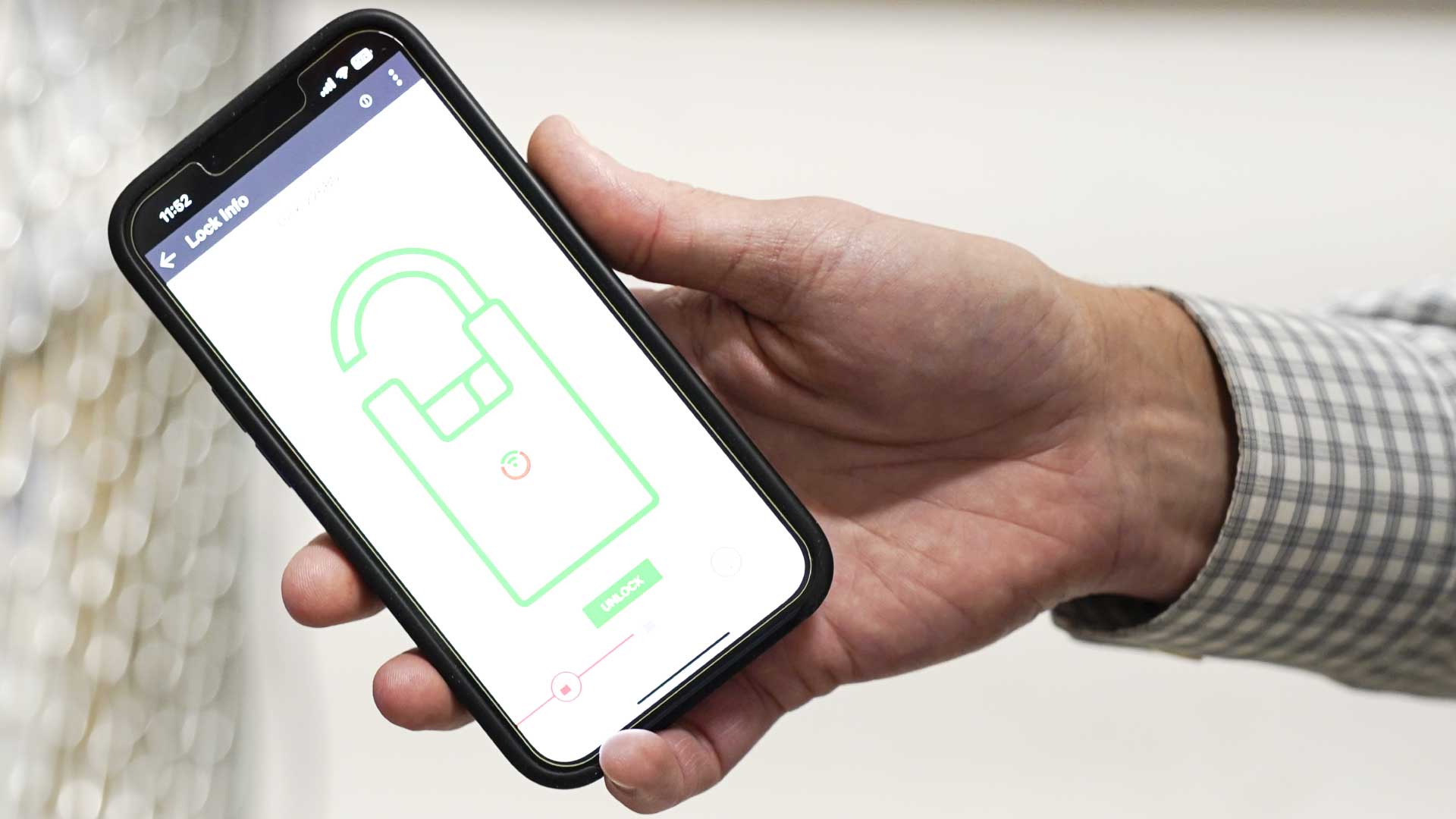A New Frontier for Loss Prevention
In retail, every open door is an opportunity—either for smooth operations or for loss.
Retailers have long relied on a familiar toolbox to protect assets and reduce shrink. From CCTV surveillance and POS monitoring to inventory audits and mystery shoppers, the loss prevention (LP) ecosystem has grown more sophisticated each year. Yet, one of the most powerful sources of behavioral insight often goes untapped: physical access data.
Knowing who accessed what, when, and where—and having that data tied to individual identities—can offer early warning signs of risk and drive smarter decisions. This isn’t just about security. It’s about accountability, efficiency, and control.
In this blog, we’ll explore why physical access is an underutilized signal in loss prevention, how outdated systems create blind spots, and how retailers can unlock operational intelligence through identity-based access control.
Section 1: Why Physical Access Matters in Loss Prevention
Traditional Loss Prevention Tools Focus on What, Not Who
Retailers deploy a range of technologies to detect and respond to theft and fraud. These tools serve critical functions but share a common limitation: they often operate independently and reactively.
- CCTV systems can capture visual evidence of incidents but don’t tell you who used a key to enter a room.
- POS systems catch anomalies in sales data but don’t show whether a suspect was near a high-value area.
- Badge readers or PIN pads log access but don’t always tie actions to a real-time verified identity.
- Inventory audits expose loss after the fact—but don’t point to how it occurred.
These tools are reactive by design. Physical access control, on the other hand, sits at the beginning of an incident chain. It’s often the first interaction that sets a theft or operational delay in motion.
Why It’s Often Overlooked
Many retailers still view access control as a simple binary: locked or unlocked. But that mindset misses the point. Modern access control systems generate data—and that data, when tied to identity, tells a story about behavior, process, and risk. LP teams need to elevate physical access into the category of strategic intelligence, not just infrastructure.

Section 2: The Problem with Physical Keys in Retail
Low-Tech = Low Accountability
Despite the digital revolution across the retail sector, many organizations still rely on physical keys. The problem? Keys are inherently untraceable.
- You don’t know who used the key.
- You can’t control when it’s used.
- You can’t revoke it without rekeying the lock.
This lack of accountability opens the door—literally and figuratively—to both malicious activity and operational inefficiencies.
Rekeying Is Reactive, Expensive, and Slow
Retail turnover is notoriously high. When an employee leaves—voluntarily or otherwise—it can take days or weeks to rekey a facility, especially in large or distributed retail environments. During this period, former staff may still have physical access to sensitive areas. Rekeying is not only slow—it’s costly, especially when multiple sites are affected.
Informal Workarounds Undermine Security
To keep things moving in fast-paced environments, staff frequently bend the rules:
- Doors are left propped open for deliveries.
- Keys are passed between employees without tracking.
- Spare keys are hidden or shared to avoid delays.

Keys are easily lost, and rekeying is expensive.
These shortcuts might save time in the moment but create massive blind spots in any investigation.
The Risks Multiply in Large or Distributed Retail Networks
When managing dozens—or hundreds—of locations, physical key systems create logistical chaos. Tracking, recovering, and rekeying physical locks at scale becomes unmanageable. Even when a security breach occurs, there’s often no forensic trail to follow.
Section 3: Identity-Based Access Control Unlocks Operational Intelligence
What Is Identity-Based Access Control?
Modern access control systems—like Teleporte—eliminate physical keys in favor of digital credentials tied to verified user identities. Employees gain access through their smartphones, using an app that enforces permissions in real time.
This allows retailers to control:
- Who can access a space
- When they can access it
- How long the access is valid
- Where anomalies emerge
And because access is tied to identity, every interaction becomes a datapoint that can inform risk models, operational audits, and staff accountability.
Operational Intelligence from Access Events
Consider the behavioral patterns that physical access data can reveal:
- Time-of-access anomalies: An employee consistently enters an area well before or after their scheduled shift. Why?
- Overlapping entries: Two staff members badge into a sensitive location when only one is scheduled. Is this collusion?
- Frequent entries to high-risk areas: A staff member accesses the safe room 3x more than peers in the same role. Is it justified?
These insights would be impossible to gather through traditional access methods. But when access is digital and tied to user identity, you can analyze patterns over time—and act on them before incidents occur.

Eliminate keys in favor of digital credentials. The brilliance of Sera4 can create a program specifically for your business.
Section 4: Connecting Access Patterns to Retail Risk Events
Real-World Scenarios Where Access Data Provides Clarity
Let’s look at a few examples where identity-based access sheds light on underlying issues:
- Shrink spike in a specific store: Investigators pull access logs and find that multiple employees have been entering the stockroom after hours, outside of shift coverage. There’s no footage—just an audit trail of unusual access. Problem identified.
- Operational delays at closing: A review of access logs shows that shift leads are routinely requesting help accessing equipment rooms. The solution isn’t more security—it’s adjusting permissions to empower responsible staff.
- Theft in electronics or cosmetics section: Products are disappearing from locked cabinets. With Teleporte, you can see that one employee accessed those cabinets during every shift where product loss occurred. The pattern isn’t proof, but it’s a clear lead.
Human Behavior Leaves a Trail
Losses are rarely random. Whether it’s internal theft, carelessness, or procedural gaps, there is often a behavioral pattern leading up to the incident. Identity-based access control lets you collect and analyze these behaviors passively—without intrusive surveillance.
Section 5: From Reactive to Proactive Loss Prevention
The Shift in Mindset
Traditionally, LP teams ask: “What happened, and how do we stop it from happening again?”
But with identity-based access systems, the question becomes: “What’s happening right now—and how can we intervene before it becomes loss?”
This shift moves LP from a reactive department to a proactive partner in retail operations.
Benefits of Proactive Access Control
- Shift-aligned permissions: Automatically limit access based on work schedules, reducing unauthorized or “just in case” entries.
- Temporary access windows: Give delivery staff, contractors, or seasonal workers time-bound credentials that expire automatically.
- Remote revocation: Revoke access instantly when an employee leaves—without physical retrieval or rekeying.
- Anomaly detection: Set up alerts for suspicious behaviors: frequent after-hours access, back-to-back entries by different users, or repeat entries to sensitive zones.
Integrating Access Data with Other Retail Systems
The real power comes when access data is integrated with other systems:
- Overlay access logs with POS data to see if suspicious transactions correlate with unusual access.
- Cross-reference with shift schedules to identify when off-duty access is happening.
- Combine with CCTV to add contextual insight—when and why someone was in a room.
When systems work together, the LP team gains a full picture of risk—not just isolated incidents.
Section 6: The ROI of Smarter Access Control
Cost Avoidance through Prevention
Even a single incident of internal theft can cost thousands. But more often, it’s death by a thousand paper cuts: small, repeated losses that go unnoticed until they affect the bottom line. Smarter access control minimizes the window of opportunity.
Fewer Operational Bottlenecks
By eliminating physical keys and enabling flexible, remote access permissions, retailers can streamline operations—especially across distributed teams.
- No more delays due to lost keys.
- No rekeying costs.
- No overnight shipping of spare keys to regional managers.
Better Use of LP Team Resources
LP professionals are valuable—not because they sit in back rooms watching video feeds—but because they analyze, intervene, and influence behavior. Identity-based access data empowers LP teams to act on signals, not just chase symptoms.

Stay ahead with AI visibility innovation
Conclusion
Is Your Access Data Working as Hard as Your Cameras?
Retailers understand the importance of visibility. But visibility doesn’t begin with a camera—it begins at the door.
With identity-based access control, you’re not just securing your stores. You’re gaining a new layer of operational intelligence, improving accountability, and reducing the friction that physical keys introduce across your business.
Loss prevention is evolving. Will your access strategy evolve with it?
Visit us at NRF PROTECT, Booth #1725 to see how Teleporte is helping LP teams across retail unlock smarter access, sharper insights, and stronger outcomes, or learn more here.
